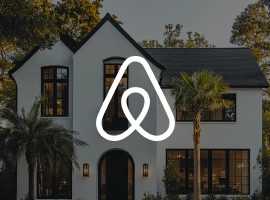1/18
Lego
Introduction
Founded in 1932 by Ole Kirk Christiansen in Denmark, LEGO has grown into one of the world’s most iconic toy brands, known for its interlocking plastic bricks. Over the decades, LEGO has fostered creativity and innovation, establishing a global community of enthusiasts and collectors. The brand’s success is attributed to its continuous focus on high-quality products, imaginative play, and a commitment to sustainability. Today, LEGO has a strong presence in over 130 countries, with a versatile marketing approach that engages diverse audiences through digital and traditional platforms.
Key Takeaways
Global Presence and Growth:
- In 2023, LEGO reported revenue of $9.66 billion, with a global market share of 13.78%, reflecting steady growth from the previous year.
- The company maintains a 79% customer retention rate, underscoring its strong brand loyalty and consistent customer satisfaction.
Brand Identity and Legacy:
- LEGO’s mission is to inspire and develop the builders of tomorrow, with products designed to encourage creativity, learning, and play.
- The brand emphasizes core values such as imagination, fun, creativity, quality, and care, which are reflected in its design, products, and customer engagement strategies.
Marketing Strategy:
- LEGO employs a multi-channel marketing approach, leveraging social media campaigns, community engagement, and partnerships with influencers and other brands to build excitement.
- The company emphasizes creativity and play in its messaging, targeting children aged 3-14 as well as adult collectors through platforms like Instagram and experiential retail initiatives.
Innovation and Diversification:
- LEGO continuously innovates with themed sets like Technic and Mindstorms, and integrates digital experiences such as the LEGO Life App and video games to reach younger, tech-savvy audiences.
- The brand also fosters creativity through initiatives like LEGO Ideas, where users can submit their own product ideas, enhancing community interaction.
Commitment to Sustainability and Philanthropy:
- LEGO is committed to sustainability, implementing eco-friendly practices and promoting inclusive marketing.
- The company made notable philanthropic contributions, such as a $50 million donation during the COVID-19 pandemic to support families in need.
- Their LEGO® Braille Bricks initiative in China and the Prescription for Play program highlight their dedication to social responsibility.
Challenges and Crisis Management:
- Despite its success, LEGO has faced challenges such as economic fluctuations and the need to adapt to different cultural and regional markets.
- The company’s public relations strategies, including its focus on sustainability and philanthropy, have helped navigate these issues effectively.
Digital and Social Media Presence:
- LEGO has a robust online presence, using social media platforms like Instagram to showcase user-generated content and connect with its community.
- The company’s interactive website and various digital platforms encourage fans to share their creations and stay engaged with the brand.
Design and Branding:
- LEGO’s design has remained consistent over the years, with its recognizable logo featuring playful and inviting colors like red, white, yellow, and black.
- The brand’s messaging is reinforced by its Cera Pro typeface, which contributes to the overall creative and approachable image of LEGO.
Share

Subscribe for the latest updates
Join 50,000 creatives to enjoy a regular dose of inspiration and motivation, delivered to your inbox every Tuesday.




















